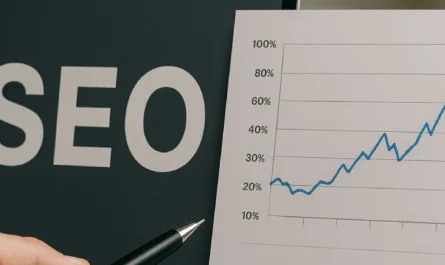Introduction
As we approach 2025, the importance of Core Web Vitals in search engine optimization (SEO) has never been more evident. Google has made it clear that user experience (UX) is a top priority when ranking websites, and CWV are a key part of this initiative. These metrics help determine how well your website performs in terms of speed, responsiveness, and visual stability, all of which are critical factors for both SEO and user satisfaction.
In this blog, we’ll explore how the CWV update for 2025 will impact SEO and offer practical steps to ensure your website meets the standards required to stay competitive, whether you’re a Digital Marketing Agency in Mumbai or a creative agency in Bangalore.
Why Is This Blog Important?
Google’s focus on Core Web Vitals means that your website’s performance is directly tied to your visibility on search engines. As user expectations rise, websites that fail to optimize their CWV will see a significant drop in rankings. Given how rapidly AI and machine learning are influencing search algorithms, staying ahead of these updates is crucial. Websites that perform poorly will lose traffic, resulting in decreased conversions and ultimately, a loss of revenue. For businesses like integrated marketing agencies in Mumbai, this could be a game-changer, and understanding CWV is now more essential than ever.
Body
What Are Core Web Vitals?
CWV consist of three key performance indicators that directly impact the user experience on your site. These include:
- Largest Contentful Paint (LCP): This measures the loading performance of the largest content element visible to the user, typically an image, video, or large block of text. The goal is to have an LCP score of under 2.5 seconds for an optimal user experience.
- First Input Delay (FID): This measures the responsiveness of your website when a user interacts with it (e.g., clicking a link or button). Ideally, the FID should be under 100 milliseconds.
- Cumulative Layout Shift (CLS): This measures visual stability, ensuring that the layout does not shift unexpectedly as the page loads. A good CLS score is less than 0.1.
These metrics help ensure that websites provide a fast, stable, and engaging experience for users. Since Google has included these metrics in its ranking criteria, optimizing for Core Web Vitals is a critical component of any SEO strategy.
The Impact of Core Web Vitals on SEO
With Google’s continued focus on user experience, CWV are becoming even more integral to SEO. In 2025, Google’s algorithm is expected to place even greater emphasis on these metrics, so mastering them now is essential for staying competitive in search rankings.
For businesses like creative agencies in Bangalore or digital marketing agencies in Mumbai, understanding how these metrics affect SEO is vital. Poor result can cause a website to rank lower, even if the content is relevant and high-quality. Therefore, it’s not enough to just create great content anymore; your website must also perform well across these metrics.
How to Improve CWV for 2025
- Improve Page Loading Speed (LCP):
To improve your LCP score, focus on optimizing large images, videos, and other content that load first on your page. You can also implement lazy loading for off-screen content, use modern image formats like WebP, and reduce the size of CSS and JavaScript files. Tools like Google PageSpeed Insights can help you identify the areas that need improvement. - Enhance Interactivity (FID):
To reduce First Input Delay, optimize your JavaScript and ensure that it loads quickly. Minimize the number of elements that block the main thread of the browser, and prioritize the loading of interactive elements to make your site more responsive. - Reduce Layout Shifts (CLS):
To ensure a stable layout, always specify dimensions for images and videos in your HTML and CSS, so the browser knows how much space to allocate before the content loads. Avoid injecting content dynamically without proper space allocation, as this can cause shifts in the layout. - Utilize Caching and Content Delivery Networks (CDNs):
A CDN can distribute your content across multiple servers worldwide, ensuring that users load your website faster, no matter where they are. Coupled with proper caching strategies, your website’s performance can improve significantly. - Mobile Optimization:
With mobile-first indexing becoming a reality, optimizing Core Web Vitals for mobile devices is non-negotiable. Make sure that your website is responsive, mobile-friendly, and performs equally well on smaller screens.
Tools to Measure and Monitor Core Web Vitals
- Google PageSpeed Insights: Provides a comprehensive analysis of your website’s Core Web Vitals performance and offers actionable suggestions for improvement.
- Google Search Console: You can monitor the Core Web Vitals performance of your website on the “Core Web Vitals” report. This is a free and easy-to-use tool for ongoing monitoring.
- Lighthouse: An open-source, automated tool for improving the quality of web pages, Lighthouse allows you to audit performance, accessibility, and SEO.
Conclusion
Mastering Core Web Vitals is no longer optional—it’s a must for any business looking to succeed in 2025. Whether you’re running a Digital Marketing Agency in Mumbai or a creative agency in India, staying on top of these metrics will help you maintain strong SEO performance and enhance the overall user experience. Implementing the strategies mentioned here will ensure that your website is ready for the future of SEO, and help you avoid any ranking drops in the face of new Google updates.
Does this interest you? Connect with us to see how we can help you!
Trending FAQs
- What are Core Web Vitals?
Core Web Vitals are three key performance metrics used to measure a website’s user experience—LCP, FID, and CLS. - How do CWV affect SEO?
CWV directly impact your search engine rankings, as Google now uses them as a ranking factor. - What is a good LCP score?
A good LCP score is under 2.5 seconds to ensure fast loading of key content. - What is the ideal FID for good user experience?
The ideal FID score is under 100 milliseconds to ensure responsiveness. - How can I reduce CLS on my site?
You can reduce CLS by ensuring that all elements on the page are sized and have a defined position before content loads. - Why is mobile optimization important for CWV?
Mobile optimization ensures that your website performs well on smartphones, a key factor for good CWV scores. - How often should I check my Core Web Vitals?
Regularly monitor your CWV using tools like Google Search Console to stay ahead of performance issues. - Can improving Core Web Vitals boost SEO rankings?
Yes, improving CWV can result in higher rankings on Google, as they are now a key ranking factor. - What tools can I use to improve CWV?
Tools like Google PageSpeed Insights, Lighthouse, and Google Search Console can help you improve and monitor CWV. - What is the future of CWV?
As user experience becomes increasingly important, CWV will continue to be a crucial part of SEO strategies.




